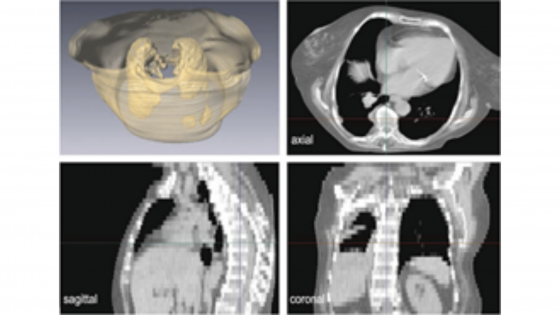Project leader: Professors Hongkai Zhao and Yimin Zhong
Project manager: Mo Zhou
Team members: Arun Chakrabarty, Sarah Glomski, Nathanael Ong, Ashley Wang
With current technology, we are able to utilize X-rays to obtain images of the human body. But an X-ray cannot just obtain a ”picture” of internal objects inside the human body; how, then, do we obtain a legible image? When an X-ray beam passes through an object at a given intensity, a certain amount of the rays are absorbed or deflected by the object, which allows us to obtain information about the materials within the object. By examining that difference between the intensity of the X-rays that enter and exit, we can draw conclusions about the X-ray absorption of the materials in the body, which allows us to then reconstruct a sense of the materials that the X-rays had to pass through.
Computed tomography, more popularly known as CT scanning, is a medical imaging technique that obtains multiple X-ray measurements of the body from different angles and positions. With these measurements, computer algorithms can reconstruct cross-sectional ”slices” of the body, as shown in Figure 1. Generally, X-rays are a minimally invasive way of imaging parts of the human body, with the CT scan being a particular applications that essentially collates multiple measurements into better, more high-construct results. However, the CT scan necessarily faces the mathematical problems related to reconstruction of an image from X-ray measurements. Beyond noise from scanning, the resulting reconstruction will not be perfect because mathematical reconstruction can only achieve an approximation of the actual object. Through understanding the mechanics behind the CT scan, we can also better understand possibilities for improving computer reconstruction.
Download the report: "Mathematical clairvoyant: mathematical inverse problems"

